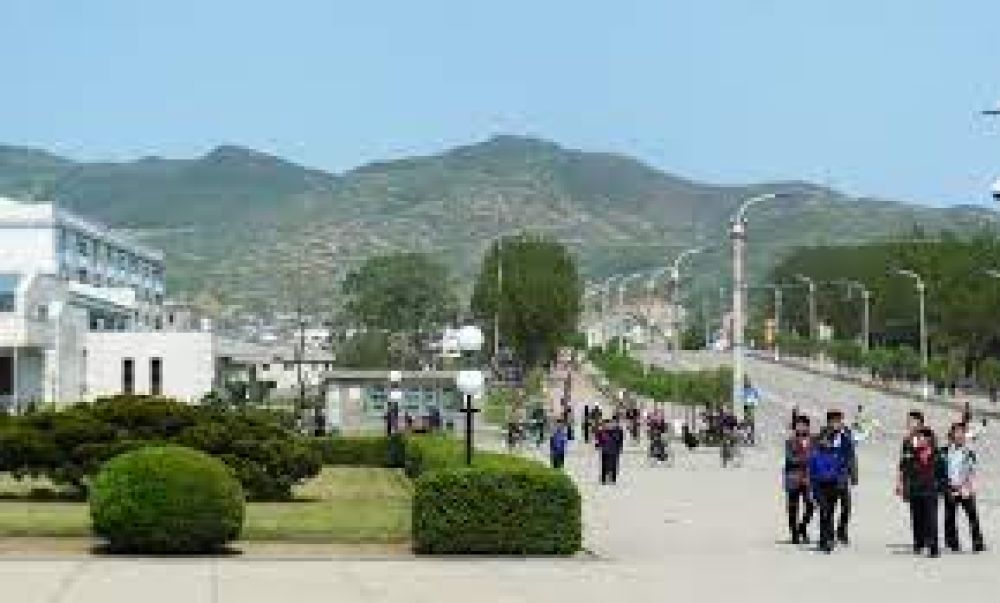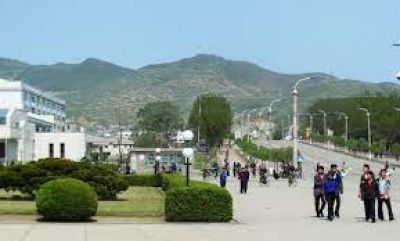

On this guided tour of the Chongjin Revolutionary Museum, visitors will immerse themselves in the history of North Korea's revolutionary struggle. The museum's vast collection of artifacts and exhibits chronicles the fight for independence from Japanese occupation and the subsequent development of the socialist state. Each exhibit is meticulously curated, showcasing personal belongings of the leaders, historical documents, and vivid photographs. The tour is not only educational but also ideologically charged, highlighting the feats of the Kim family. As you travel through the rooms, your guide – who speaks fluent Korean and possibly basic English – will detail the significance of each artifact, providing an in-depth understanding of the country's revolutionary and wartime history. This activity takes on the feel of a pilgrimage for many local visitors, aimed at enhancing their reverence for the Kim dynasty that is at the heart of North Korean identity.
Partake in a viewing of one of the many revolutionary-themed documentaries that the Chongjin Revolutionary Museum offers. These screenings are designed to provide an audiovisual complement to the exhibits by delving into the guerrilla activities of Kim Il-Sung, the country's Eternal President, and other important figures in the North Korean revolution. The museum takes pride in its state-of-the-art theater, where visitors can absorb the grand narrative that is central to understanding North Korea's view of its modern history. Typically featuring a blend of historical footage and dramatic reenactments, these films reinforce the themes present throughout the museum's galleries. Expect a narration that is both solemn and celebratory, often accompanied by stirring patriotic music. This experience will give you a poignant look at the storytelling techniques used by the North Korean state to educate and inspire its citizens.
One of the museum's highlights is the meticulously designed Revolutionary Statues Vignette, which features a series of life-size statues depicting key moments in North Korea's revolutionary history. The vignette captures the intense emotion and valor of these moments, giving visitors an almost tangible sense of participation in the events. As you navigate between the displays, you'll observe various scenes from guerrilla battles to moments of political triumph that are central to the country's founding myths. Each statue is accompanied by a descriptive plaque in Korean, with the possibility of a translation provided by your guide. This exhibit is crafted to convey a deep sense of national pride and respect for the soldiers and leaders who fought for the country's independence and sovereignty. Visitors can expect a powerful visual narrative that encapsulates the spirit of the North Korean revolution through art.
The museum offers an extensive exhibition of historical artifacts that take you on a journey through the significant periods of the North Korean revolutionary history. Each artifact, whether it's a document, a weapon, or personal memorabilia of historical figures, is carefully preserved and displayed to provide insight into the times they originate from. You will see items such as old uniforms, medals of honor, original handwritten notes, and other relics that have been deemed integral to understanding the North Korean revolution. The presentation is both austere and reverential, in keeping with the solemn atmosphere of the museum. Guides and descriptive signage supply the context necessary for foreign visitors to comprehend the significance of these items. Most importantly, these artifacts offer an intimate glimpse into the past, allowing visitors to connect with the historical narrative on a more personal level.
The Chongjin Revolutionary Museum also houses a study room where visitors, particularly students and researchers, can delve deeper into the history that the museum portrays. This room offers a range of reading material, including books, pamphlets, and scholarly articles, mostly in Korean, that cover topics related to the revolutionary history of North Korea, the Korean War, and Juche ideology. For those serious about understanding North Korea's perspective on its own history, spending time in the study room can be an enlightening experience. It's a quiet space meant for reflection and learning, and while material in other languages may be limited, the opportunity to engage with local texts is invaluable. This is where visitors can spend time absorbing the detailed chronicles of North Korea's past as portrayed by its own scholars and historians.
